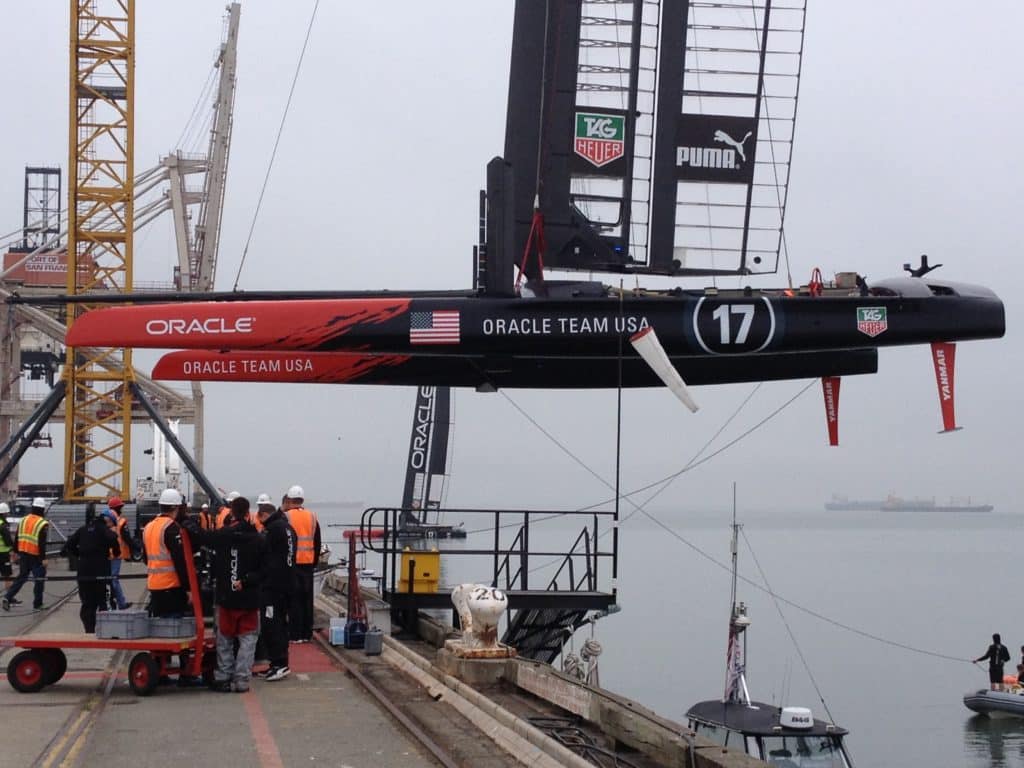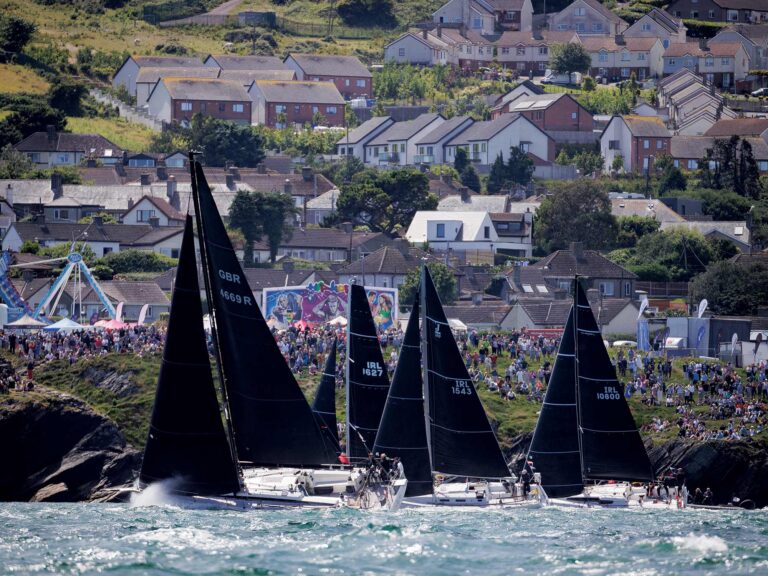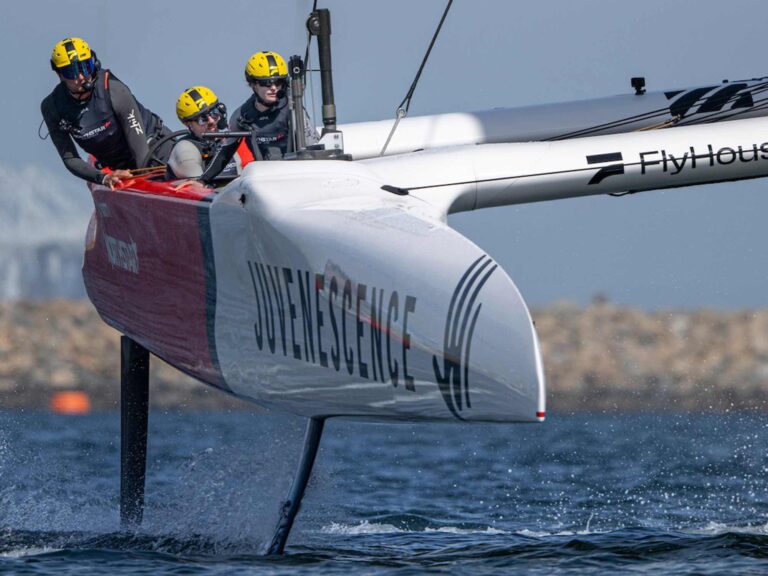
Oracle Team USA: Launch
Hours before the suited workforce of San Francisco’s Financial District shuffle into their offices, the shore and sailing teams of Oracle Team USA are trickling in past their chain-link and barbed wire security gate at Pier 80. With the sun barely up, the morning air is moist, still and silent, save for gulls screaming incessantly from the rooftop of Oracle’s big, black warehouse. Soon, forklifts and shortwave radios fire to life as the building’s huge bay doors open. Crews roll Oracle’s “Boat 1,” as well as its 140-foot wing, from the bowels of the base, a process that is now routine. Just off the concrete pier, Oracle’s “Boat 2,” drifted around its massive orange mooring, the night watch team having been released from their vigilance. For the next hour, nearly 30 sailors and shore team crane the wing aloft, gingerly place it onto the catamaran, and connect the carbon rigging. Then, the entire package is gently placed into the murky waters alongside Boat 2.
Let the testing commence.
The ability to two-boat test is the most powerful tool in Oracle’s arsenal, and it’s a huge undertaking to dispatch two talent-heavy sailing teams, maintain two boats (and wings) and collect and crunch terabytes of raw performance data. Over the past two weeks, as one Louis Vuitton Cup challenger continues to build its boat, another sits outside a jury room, and a third is sailing around the racecourse alone, Oracle has been ratcheting up its testing to full-tilt.
On the agenda today is a look at a few headsail combinations, and a few practice laps around the AC racecourse before it’s closed off at noon for Emirates Team New Zealand’s uncontested race against Artemis.
Boat 2, Oracle’s new boat, has been in the water overnight to simplify the morning workload and allow the sailing team to get an early start. As the sailing team spills out from the compound at around 9 a.m., dressed in full battle gear, they’re shuttled by rib to the the two boats. Laminated sheets are handed to the skippers, showing who’s on which boat. Onboard Boat 1, grinder Matt Mitchell, clipboard in hand, audibles a checklist to ensure the required equipment is onboard. The last transfer delivers the afterguard—Olympians Tom Slingsby and Ben Ainslie, and Hall of Famer John Kostecki—not a bad lineup to have for the B Boat.
Then, there’s a hitch in the already delayed dock-out time.
“Ben forgot his PDA,” shouts grinder Shannon Falcone to team assistants on the dock. “It’s in the dressing room … in the box that says helm!”
After some quick ribbing from his teammates, Ainslie smiles and throws his hands up as if to say, “My bad. Sorry.”
Once they slip the mooring line they commence the long tow out past Alcatraz and toward the Golden Gate Bridge, where Boat 2 is waiting. Shadowing them is a small armada of safety and support boats, as well as the “performance” boat, loaded with computers, instruments, and a cadre of sailing’s best and highest paid brainpower. CEO Russell Coutts is taking a break from his desk duties for a look to see how his steed is progressing. Everyone in the observation fleet has strict orders to never position themselves in front of the boats once they’re underway. They’re wickedly fast and unpredictable, and hard to outrun.
After a few warm up maneuvers, they mock a race start, eat up a quick reach, and turn downwind toward South Bay. The morning winds are lighter so one boat deploys a full headsail inventory (gennaker and jib) while the other hoists a square-top jib. The point of the exercise, I’m told earlier in the morning, is to gauge which arrangement is faster, which allows more efficient jibing, and what angles each sail plan allows them to sail. The known challenge with a gennaker is that it must be rolled and unrolled through every jibe, requiring the grinders to expend more energy, and delaying their transition across the boat. At least on appearance, the jib set up proved to be much more effective, which would explain why most teams have a shortened their spines (bowsprits) and Oracle is expected to do the same.
As the wind increases before noon they pause the testing to even out the headsail inventory. One boat deploys a square-top jib, the other what looks to be a more traditional triangular jib. The square top has a very straight lower leech, its top twisted off. The other has a very straight and uniform leech.
Testing recommences with Kostecki and Spithill keying off each other over their communications systems, as they make their way around the racecourse twice more. There’s discussion of daggerboard rake angles, and on which side to connect the halyard, as well as which race marks they’ll use. And as they take off with speeds in excess of 30 knots, we relent our high-speed chase, and instead watch them from afar. When they pop up on their foils they truly appear to be airborne, with a sliver of horizon under their hulls. The phrase thrown around the America’s Cup village, “Flying on Water,” is no hyperbole.









